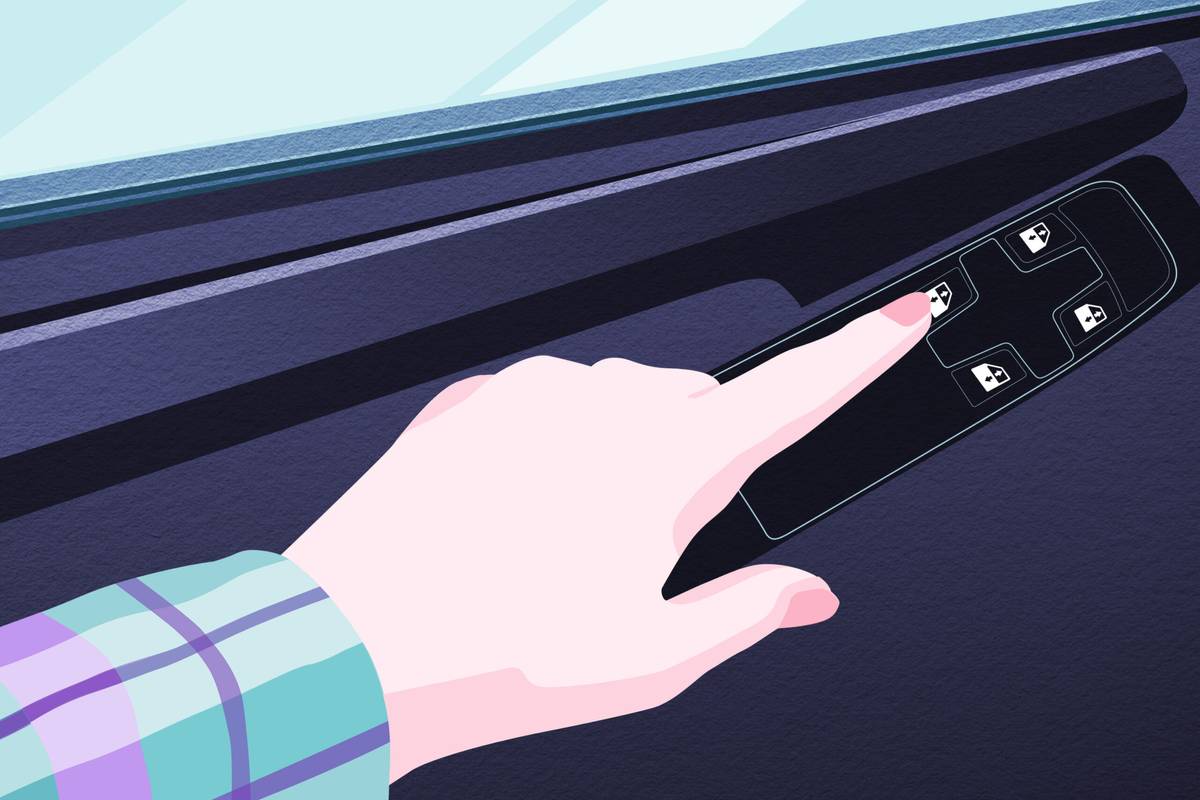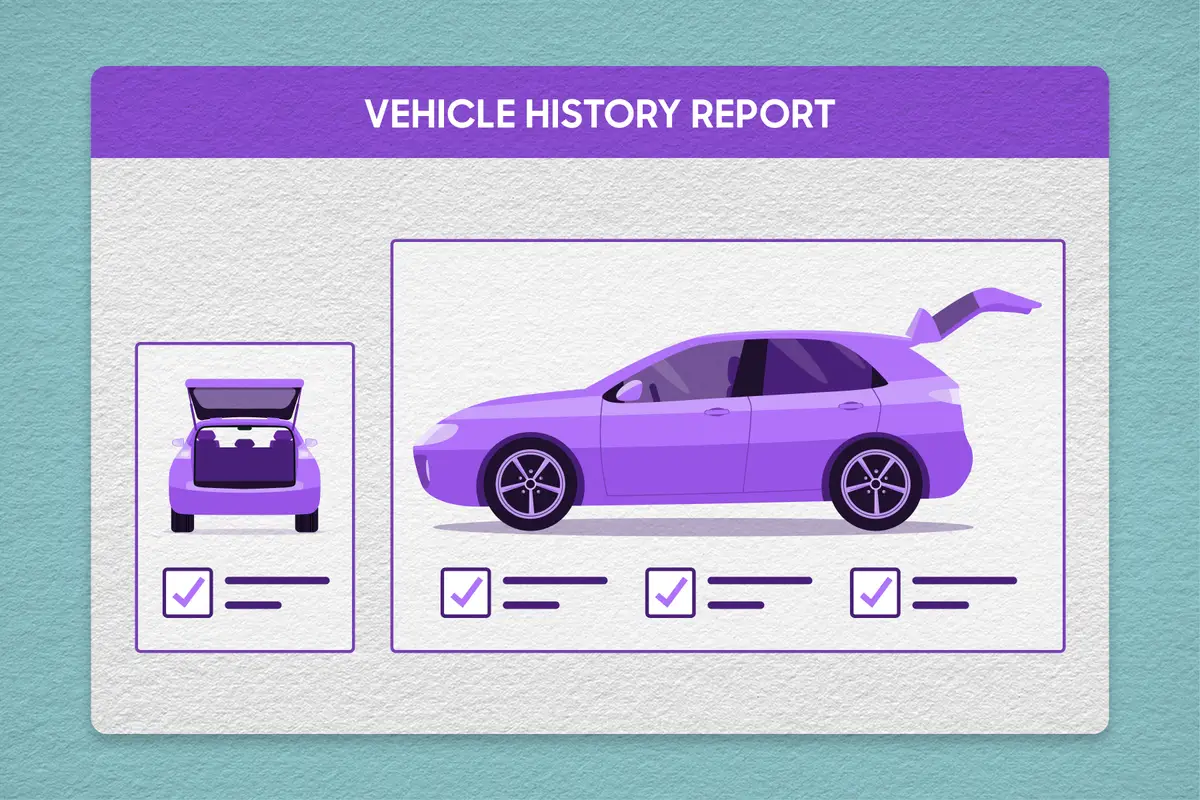Why Will My Car Window Not Roll Up?

The simple act of pressing a car’s power-window button and having the window roll up brings quite a few components into play. If the window does not roll up, it likely means there’s a problem with one of those components.
Related: How Do I Find Out if a Car Is Still Under Warranty?
In general order of simplicity and cost to fix, potential failures could include:
- The window is cocked and jammed in its track.
- A fuse is blown. (There may be a separate one for each window.)
- A relay is faulty. (There’s usually only one.)
- The switch is bad.
- The window’s motor has burned out.
- The window regulator (the mechanical lift mechanism inside the door) is not functioning properly.
- The Body Control Module (essentially a computer; older cars may not have one) malfunctioned.
Simple Things to Try to Fix a Car Window
A simple potential fix for a car window that will not roll up is to hold the switch in the “up” position for 10 seconds, then in the “down” position for 10 seconds (whether or not the window moved the first time), then try “up” again. This may reset any computer-related malfunction.
If the window that’s not rolling up isn’t the driver’s window, you can try using the switch that’s on that window’s door to close the window, or use the driver’s switch to close the window if you’ve only tried the one on the door. If it’s a rear window that’s causing the problem, check to make sure the child-safety switch (if you have one, it’s usually grouped with the other window switches on the driver’s door) hasn’t been accidentally activated.
Whether the problem is with the driver’s window or not, one tool that can come in handy is your ears. When you activate the switch, do you hear anything happening inside the door? If not, it likely means that electrical power isn’t making it to the window’s motor inside the door, or that the motor itself is bad. But if you hear a grinding, clicking or whirring noise, it usually means that electrical power is being delivered to the window motor inside the door, but something else inside the door isn’t working right. Since repairing anything inside the door means at least removing the inner door panel (which can be a challenge and might require trim-release tools you may not have) and other pieces that may take special equipment to diagnose and fix, this might be where you head to a professional, such as a dealership, independent mechanic or glass shop.
If you’re not hearing any noises inside the door when you activate the power-window switch, the first three items listed above are a good place to start, as you can usually check them yourself without a lot of trouble or tools.
Diagnosing Other Possible Causes
The possibility that the window has become cocked and jammed in its track is something to check whether you hear a noise or not, though it may be hard to discern if the window is all the way down. If the door has a window frame (some don’t), check the U-shaped window track in the door to make sure it’s clear of debris and not pinched. Then turn on the ignition, open the door and try to raise the window — either by grabbing it with your fingers or clamping it between your palms — while simultaneously activating the switch. (You may need someone else to do that if both of your hands are busy, and be careful to not get your fingers pinched in the window if it begins to work.) You can also try holding the switch in the “up” position and closing the door firmly, as this can loosen anything that’s stuck. If either of these tricks works, it’s probably best to leave the window up and get the car to someplace where it’s covered and secure before going further.
The next thing to check is the fuses. Your car’s owner’s manual or an internet search for, “Where is the fuse box on a [year/make/model of your car]?” should tell you where your fuse box is located and include a diagram showing which fuses handle which circuits. Look for the fuse that handles the power windows; there may be one fuse for each window. Pull out the relevant fuse (you may need the special “pinching” tool that usually sits in the fuse box or a pair of needle-nose pliers) and check to see if it’s blown. A fuse usually has a U- or S-shaped filament in it, and if the filament has a gap in the middle, it’s blown.
If you can find a spare fuse that has the same amperage rating (amperage ratings range from 5-30 amps and are marked on the outside) — or one of the same rating that controls something inessential (like the radio) in the fuse box — you can replace the blown power-window fuse with that one. The concern here is that whatever caused the original fuse to blow might also blow out the new fuse.
Some power-window circuits also have a relay, which is usually a cubical, walnut-sized component that allows a small amount of electric power to channel a larger amount of electric power, preserving circuit strength. If so, the relay may be in a different panel than the fuses, and finding it may likewise require consulting the owner’s manual or the internet.
While testing a relay requires a 12-volt power source and a volt-ohm multimeter you may not have, there may be another, identical relay in the same panel; if so, it will look the same and have the same numbers on the outside. If you find one, look to see what it controls (say, the heater’s blower motor) and check to make sure that component is working; if so, you know that relay is good. Mark the power-window relay with a pencil or marker so you don’t get the two mixed up and remove both relays. Then plug the questionable power-window relay into the socket of the other relay and check to see if that circuit still works. If it does, the power-window relay is good; if not, you may have found your problem.
If the power-window relay is fried, the temptation would be to simply plug the good relay into the power-window relay’s socket. However, there’s a possibility an electrical system malfunction caused the power-window relay to fail, and you don’t want it to do the same to the good relay if it originally controlled something you need in order to drive the car. If the good relay controls something inessential, you can perhaps just put the good relay into the power-window socket to close the window, then put the relay back into its original socket.
More From Cars.com:
- Why Does My Car Make a Squealing Noise?
- What Does the ‘Auto’ Button for My Air Conditioning Actually Do?
- How to Properly Check and Put Air in Tires
- Are Extended Car Warranties Worth It?
- More Service News
More Technical Issues
A good possibility for why the window won’t roll up is a problem with the power-window switch. If the switch is mounted in the armrest, you may be able to access it without removing the inner door panel, though you still might need some special tools to avoid damaging the area around it. An internet search for, “How to remove the power-window switch on a [year/make/model of your car]” should let you know what’s involved. Note that you’ll likely need a volt-ohm multimeter and possibly a 12-volt power source — along with some instructions — to determine whether the switch is bad.
Going any further will require removing the inner door panel, which may require special trim-removal tools to avoid damaging the panel; an internet search for how to do so will tell you if that’s the case. Although it’s likely that once inside you’ll find that fixing what’s broken may be beyond what you can do, it’s also possible that you may at least be able to manually raise the window, which you can then keep in place with a stick. Note that the power-window circuit may also run through a body control module (a computer that isn’t located inside the door), which can malfunction and be difficult to diagnose; an internet search should tell you if your car has one.
Parts inside the door that could go bad include the power-window motor and the regulator. (The regulator is powered by the motor and mechanically raises the window.) Both can be difficult to replace, as some parts might be attached with rivets that need to be drilled out. You can probably search for, “How to replace the power-window regulator [or motor] on a [year/make/model of your car]” to first determine how hard it will be. If it involves drilling out rivets or reprogramming a replacement motor, that may be the deciding factor in having the problem addressed by a professional.
Cars.com’s Editorial department is your source for automotive news and reviews. In line with Cars.com’s long-standing ethics policy, editors and reviewers don’t accept gifts or free trips from automakers. The Editorial department is independent of Cars.com’s advertising, sales and sponsored content departments.
Featured stories




